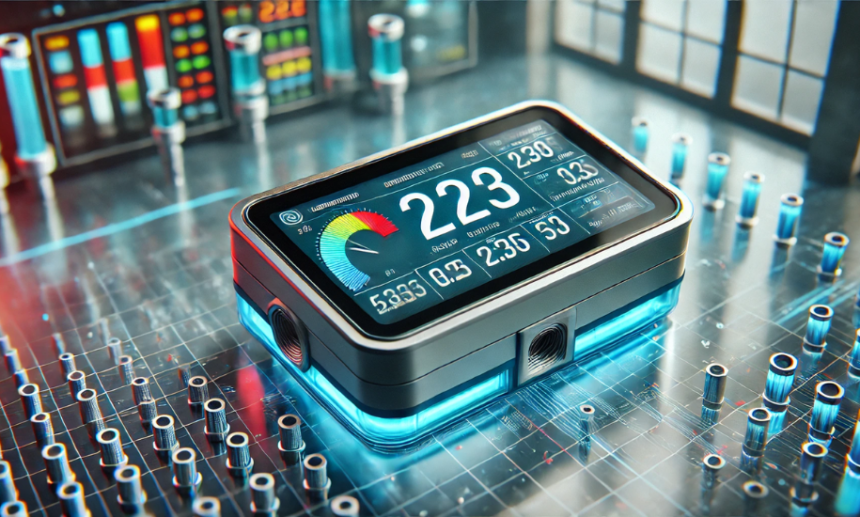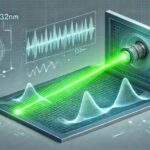Physics Heaven is your ultimate source for diving deep into the world of advanced scientific tools and principles. In today’s article, we explore the remarkable device known as the electromagnetic meter. This device is essential for modern industries, offering precise measurements and reliability in monitoring fluid dynamics. Let’s dive into the world of the electromagnetic meter and understand its significance, applications, and working principles.
What is an Electromagnetic Meter?
An electromagnetic meter is a specialized instrument designed to measure the flow rate of electrically conductive liquids within a pipeline. This device operates on the principle of Faraday’s Law of Electromagnetic Induction, which states that a voltage is induced when a conductive fluid passes through a magnetic field. The magnitude of this voltage is directly proportional to the velocity of the fluid.
Electromagnetic meters are renowned for their non-invasive nature, as they do not have any moving parts or obstructions within the flow. This ensures accuracy, durability, and minimal maintenance requirements, making them a popular choice for industries ranging from water treatment to chemical processing.
The Principle Behind Electromagnetic Meters
At the heart of an electromagnetic meter lies Faraday’s Law, which governs its operation. According to this principle, when a conductive fluid flows through a magnetic field generated by the meter, a voltage is induced perpendicular to the direction of flow and the magnetic field. Electrodes positioned within the meter detect this voltage, which is then processed to determine the flow rate of the liquid.
Key Components of an Electromagnetic Meter
- Magnetic Coils: Generate the magnetic field required for inducing voltage.
- Electrodes: Detect the voltage induced by the flowing fluid.
- Flow Tube: The section of the pipeline where measurement takes place.
- Signal Processor: Converts the detected voltage into flow rate readings.
Advantages of Using an Electromagnetic Meter
Electromagnetic meters have become a preferred choice for many applications due to their numerous benefits. These include:
- High Accuracy: These meters offer precise flow measurements with minimal error margins, even in challenging conditions.
- Non-Intrusive Design: With no moving parts or flow obstructions, electromagnetic meters reduce the risk of wear and tear.
- Versatility: They can measure a wide range of conductive fluids, including water, slurries, and corrosive chemicals.
- Minimal Maintenance: Their simple construction and durable components result in low maintenance requirements.
- Wide Range of Applications: They are suitable for industries such as water management, pharmaceuticals, food processing, and more.
Applications of Electromagnetic Meters
Electromagnetic meters are indispensable tools in a variety of fields. Some of their most common applications include:
1. Water and Wastewater Treatment
In water management, electromagnetic meters are used to monitor the flow of clean and wastewater. Their accuracy ensures efficient water distribution and proper treatment of waste.
2. Chemical and Pharmaceutical Industries
In these sectors, electromagnetic meters are employed to measure the flow of corrosive and viscous fluids. Their ability to handle aggressive chemicals without degradation is a key advantage.
3. Food and Beverage Industry
From measuring liquid ingredients to ensuring consistency in production, electromagnetic meters play a vital role in food and beverage processing.
4. Energy and Power Generation
In power plants, these meters are used to measure cooling water flow, boiler feed water, and other critical fluids, ensuring optimal operation and safety.
5. Pulp and Paper Industry
Electromagnetic meters are essential for monitoring the flow of slurries and pulp in paper manufacturing processes.
Factors to Consider When Choosing an Electromagnetic Meter
When selecting an electromagnetic meter, it’s essential to consider several factors to ensure optimal performance and reliability. These include:
- Fluid Conductivity: The fluid must have a minimum level of conductivity to generate measurable voltage.
- Pipe Size and Flow Range: Choose a meter compatible with the pipeline dimensions and expected flow rates.
- Operating Environment: Ensure the meter can withstand the temperature, pressure, and chemical properties of the fluid and surroundings.
- Accuracy Requirements: Different applications may demand varying levels of measurement precision.
- Budget and Maintenance: Evaluate the long-term costs, including installation and upkeep.
Maintenance and Troubleshooting of Electromagnetic Meters
Although electromagnetic meters are low-maintenance devices, periodic checks and servicing can enhance their lifespan and accuracy. Common maintenance practices include:
- Cleaning Electrodes: Remove any buildup to ensure accurate voltage detection.
- Inspecting the Flow Tube: Check for signs of wear, corrosion, or blockages.
- Calibrating the Meter: Regular calibration ensures the device remains accurate over time.
- Checking Connections: Ensure all electrical connections are secure and free from damage.
Troubleshooting Tips
- Inconsistent Readings: Check for fluid conductivity or signal processor issues.
- No Output: Verify that the magnetic coils and electrodes are functioning correctly.
- Error Codes: Consult the device manual to interpret and resolve specific error codes.
The Future of Electromagnetic Meters
With advancements in technology, electromagnetic meters are becoming even more precise, compact, and energy-efficient. Integration with IoT (Internet of Things) and smart monitoring systems allows real-time data collection and remote management, further enhancing their utility.
Sustainability and Environmental Benefits
By providing accurate flow measurements, electromagnetic meters contribute to resource optimization, reducing waste and energy consumption. This aligns with global efforts toward sustainable and environmentally friendly industrial practices.
Conclusion
Electromagnetic meters are indispensable tools in modern industries, offering unparalleled accuracy, reliability, and versatility. From water treatment plants to pharmaceutical manufacturing, these devices play a pivotal role in ensuring efficient operations and resource management. At Physics Heaven, we celebrate the innovation and science behind such groundbreaking instruments, emphasizing their impact on technology and everyday life.
Understanding the principles, applications, and benefits of electromagnetic meters helps us appreciate their contribution to industrial and environmental progress. Whether you’re a professional, student, or enthusiast, the electromagnetic meter is a testament to the power of physics and its practical applications.








